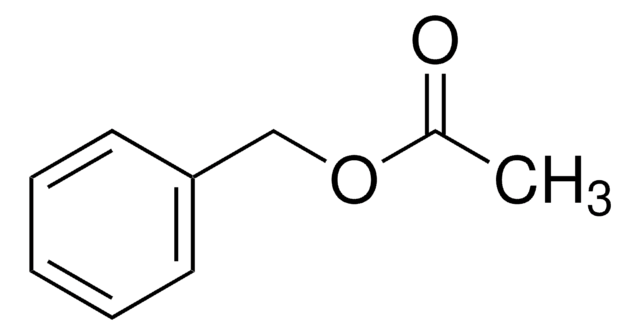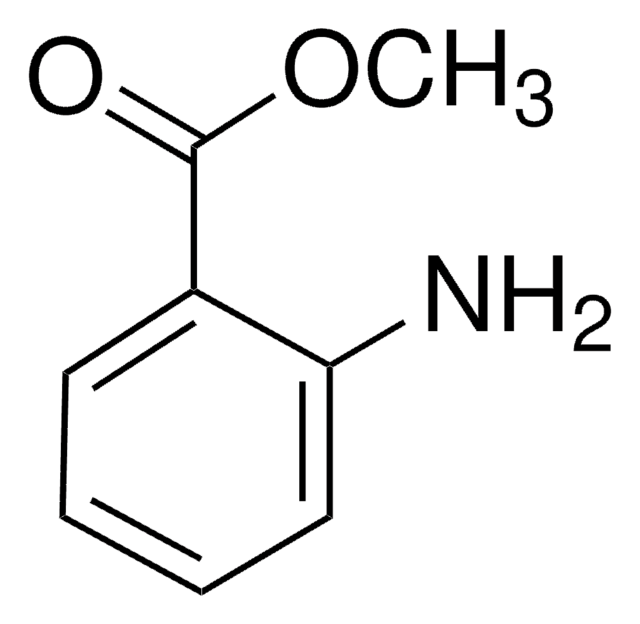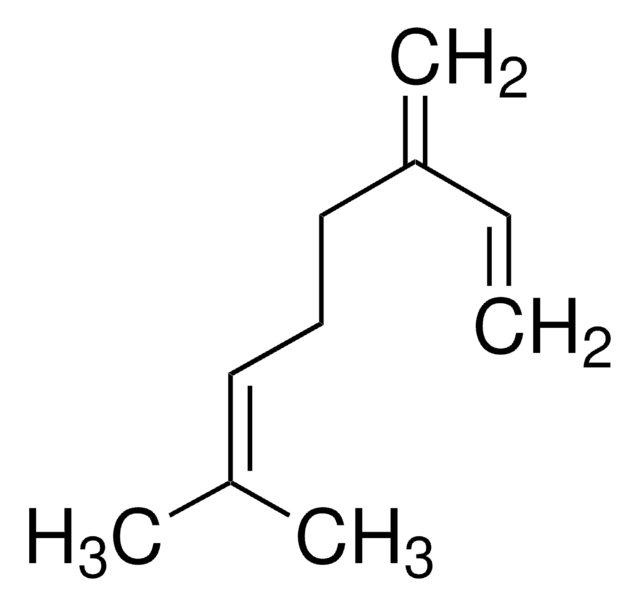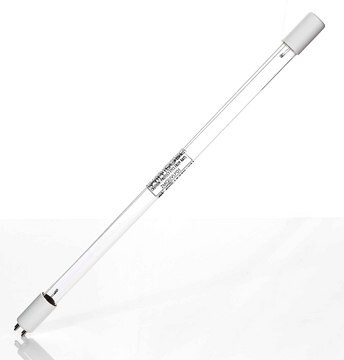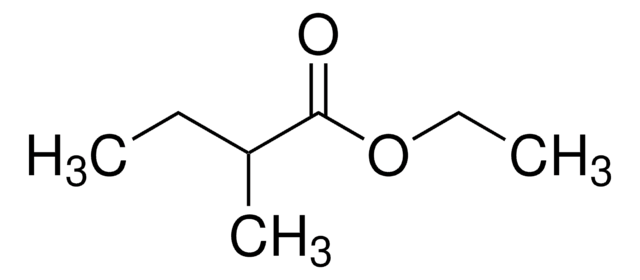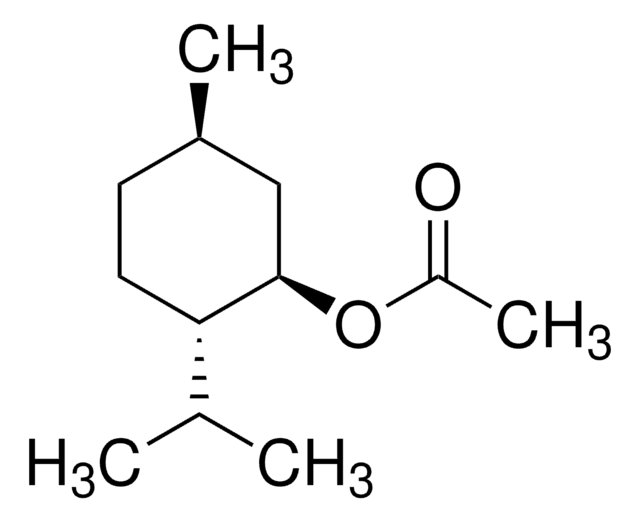W213500
Benzyl acetate
≥99%, FCC, FG
Sinonimo/i:
Benzyl ethanoate, Acetic acid benzyl ester
About This Item
Halal
Kosher
Prodotti consigliati
Origine biologica
synthetic
Livello qualitativo
Grado
FG
Halal
Kosher
agenzia
meets purity specifications of JECFA
Conformità normativa
EU Regulation 1334/2008 & 178/2002
FCC
FDA 21 CFR 117
FDA 21 CFR 172.515
Tensione di vapore
23 mmHg ( 110 °C)
Saggio
≥99%
Temp. autoaccensione
862 °F
Indice di rifrazione
n20/D 1.502 (lit.)
P. ebollizione
206 °C (lit.)
Punto di fusione
−51 °C (lit.)
Densità
1.054 g/mL at 25 °C (lit.)
applicazioni
flavors and fragrances
Documentazione
see Safety & Documentation for available documents
Allergene alimentare
no known allergens
Organolettico
floral; fruity; sweet
Stringa SMILE
CC(=O)OCc1ccccc1
InChI
1S/C9H10O2/c1-8(10)11-7-9-5-3-2-4-6-9/h2-6H,7H2,1H3
QUKGYYKBILRGFE-UHFFFAOYSA-N
Cerchi prodotti simili? Visita Guida al confronto tra prodotti
Categorie correlate
Descrizione generale
Applicazioni
- Transcriptomic and proteomic approaches to explore the differences in monoterpene and benzenoid biosynthesis between scented and unscented genotypes of wintersweet.: This study examines the biosynthesis pathways of monoterpenes and benzenoids, including benzyl acetate, in different genotypes of wintersweet. By using transcriptomic and proteomic methods, the researchers identified key genes and proteins involved in the production of these compounds, providing insights into the biochemical mechanisms underlying their biosynthesis. This research has implications for understanding the metabolic engineering of fragrance compounds in plants (Tian et al., 2019).
Indicazioni di pericolo
Consigli di prudenza
Classi di pericolo
Aquatic Chronic 3
Codice della classe di stoccaggio
10 - Combustible liquids
Classe di pericolosità dell'acqua (WGK)
WGK 1
Punto d’infiammabilità (°F)
203.0 °F - closed cup
Punto d’infiammabilità (°C)
95 °C - closed cup
Dispositivi di protezione individuale
Eyeshields, Gloves, type ABEK (EN14387) respirator filter
Scegli una delle versioni più recenti:
Possiedi già questo prodotto?
I documenti relativi ai prodotti acquistati recentemente sono disponibili nell’Archivio dei documenti.
I clienti hanno visto anche
Il team dei nostri ricercatori vanta grande esperienza in tutte le aree della ricerca quali Life Science, scienza dei materiali, sintesi chimica, cromatografia, discipline analitiche, ecc..
Contatta l'Assistenza Tecnica.